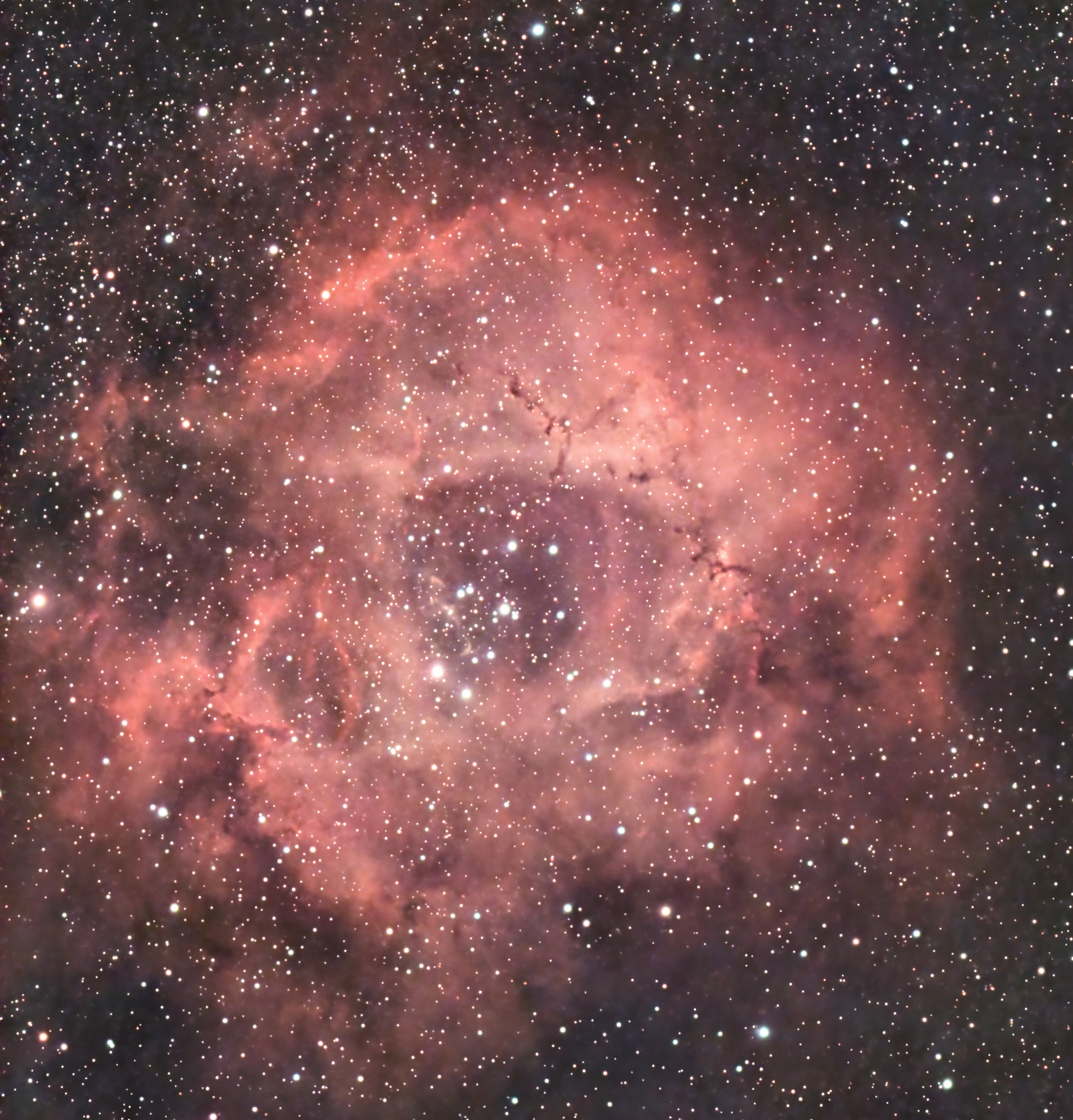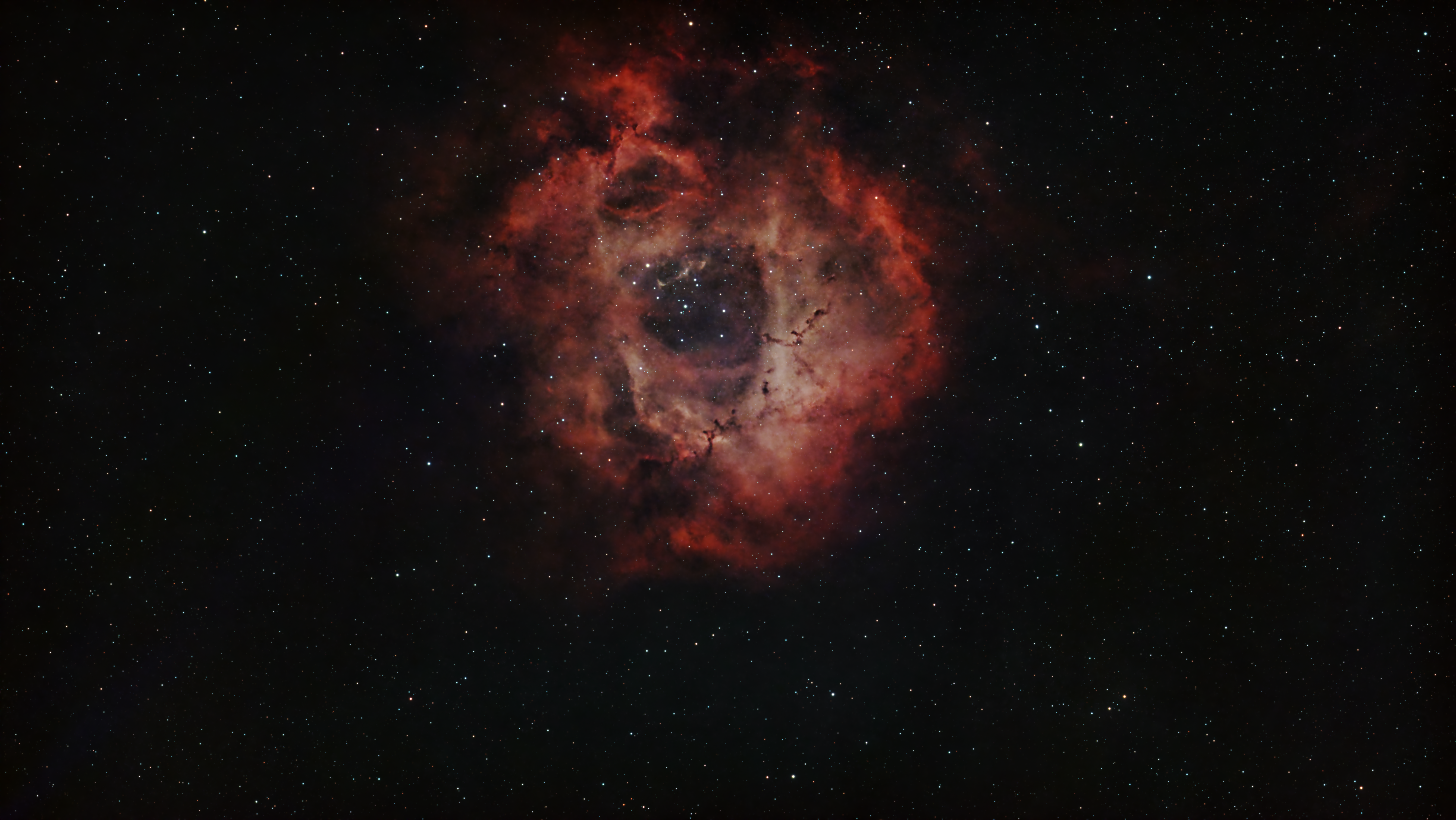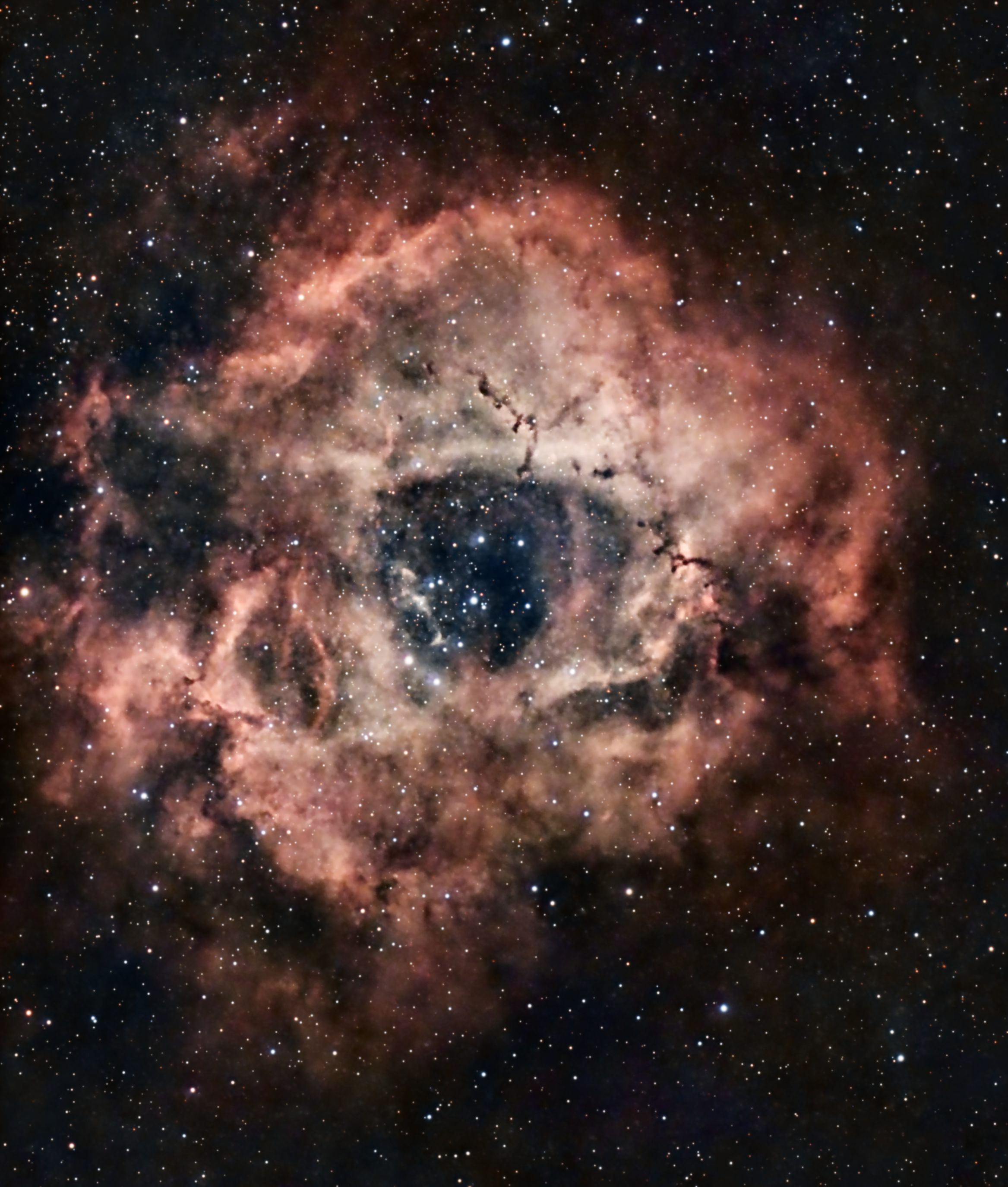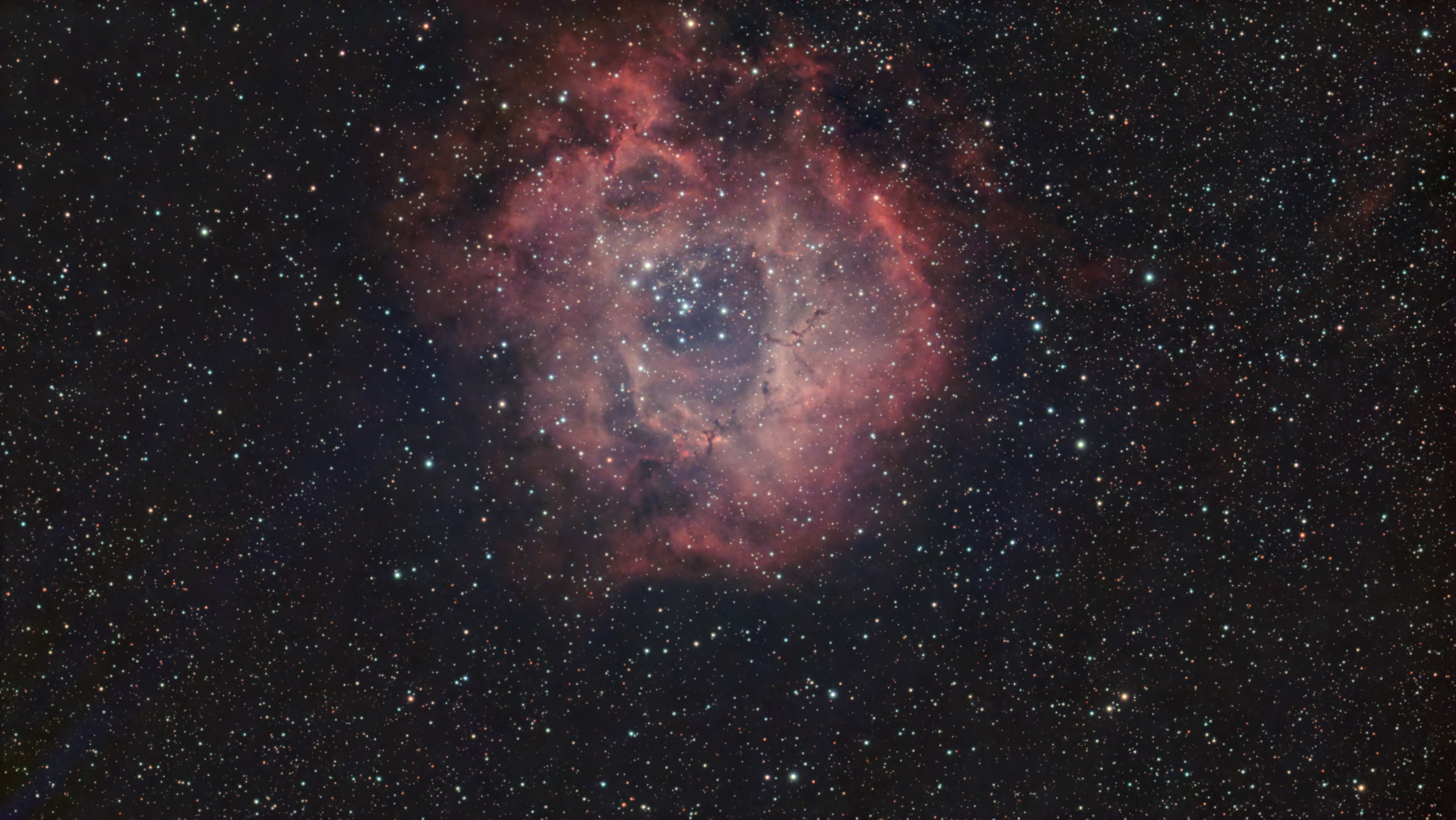Hi All,
Happy to get some constructive feedback on my image especially I expect the processing.
First a bit of background, I’m based a few miles from Manchester airport in the UK. I’m in a built up area so a limited view of the sky between neighbours houses. So on the rare clear nights I need to make the most of the few hours imaging time that are available. So the plan is to image as fast as possible.
This image is the best data I’ve got so far from a new samyang 135mm rig. I’m using a bit of an unconventional camera in the Zwo asi664mc. I really like the field of view and being a small sensor I don’t need to worry about the corners and tilt to the same degree as those using big sensors, It seems a shame to me to have a blazing fast lens only then to stop it down to make the corners work.
This was the fourth outing with the rig.
I read somewhere in a super useful post that the actual focal length of the samyang 135mm is actually 130mm. So when you plate solve your images at 130mm then the backspace is right. After some trial and messing with spacers this now plate solves at almost exactly 130mm.
This image is approx 2hrs of 30 second guided and dithered subs wide open at f2.
I didn’t use any calibration subs on the basis that the camera is not supposed to have any amp glow and as it’s such a small lens I figured that vignetting would be very limited so no lights either. On the basis of trial and error I used gain 255 on the ASI664mc to get into the HCG low noise read out area.
Because there isn’t a massive full well on this camera I limited subs to 30sec. Maybe I could have gone longer.
This was first outing with 2” Astronomik CLSCCD filter. I think it’s doing a good job with halo. F2 is a challenge for some filters. The thinking is that the wide bands of the CLSCCD would get all the emission bands. So far I think it’s probably doing a better job than the lenhance I used in earlier sessions.
I think my data is prob not too bad. Focus and guiding were ok I think. Stars look good to me in the corners, so I think tilt and backspace are prob ok given the tiny sensor.
I can always get more data but 2 hours at F2 feels like a decent chunk, and with uk weather is as much as is possible some nights.
My workflow is all in PI.
WBPP with drizzle.
Graxpert
SPCC
BlurX
sNCR
NarrowbandNormalization
NoiseX
STF—> HT
Anyway here is the image Rosette
I wonder how black the sky should be? There seems to be a lot of nebulosity everywhere so I didn’t want to make the background too black.
Thanks all. happy to post the stacked data if anyone wants to put my PI processing to shame?
Happy to get some constructive feedback on my image especially I expect the processing.
First a bit of background, I’m based a few miles from Manchester airport in the UK. I’m in a built up area so a limited view of the sky between neighbours houses. So on the rare clear nights I need to make the most of the few hours imaging time that are available. So the plan is to image as fast as possible.
This image is the best data I’ve got so far from a new samyang 135mm rig. I’m using a bit of an unconventional camera in the Zwo asi664mc. I really like the field of view and being a small sensor I don’t need to worry about the corners and tilt to the same degree as those using big sensors, It seems a shame to me to have a blazing fast lens only then to stop it down to make the corners work.
This was the fourth outing with the rig.
I read somewhere in a super useful post that the actual focal length of the samyang 135mm is actually 130mm. So when you plate solve your images at 130mm then the backspace is right. After some trial and messing with spacers this now plate solves at almost exactly 130mm.
This image is approx 2hrs of 30 second guided and dithered subs wide open at f2.
I didn’t use any calibration subs on the basis that the camera is not supposed to have any amp glow and as it’s such a small lens I figured that vignetting would be very limited so no lights either. On the basis of trial and error I used gain 255 on the ASI664mc to get into the HCG low noise read out area.
Because there isn’t a massive full well on this camera I limited subs to 30sec. Maybe I could have gone longer.
This was first outing with 2” Astronomik CLSCCD filter. I think it’s doing a good job with halo. F2 is a challenge for some filters. The thinking is that the wide bands of the CLSCCD would get all the emission bands. So far I think it’s probably doing a better job than the lenhance I used in earlier sessions.
I think my data is prob not too bad. Focus and guiding were ok I think. Stars look good to me in the corners, so I think tilt and backspace are prob ok given the tiny sensor.
I can always get more data but 2 hours at F2 feels like a decent chunk, and with uk weather is as much as is possible some nights.
My workflow is all in PI.
WBPP with drizzle.
Graxpert
SPCC
BlurX
sNCR
NarrowbandNormalization
NoiseX
STF—> HT
Anyway here is the image Rosette
I wonder how black the sky should be? There seems to be a lot of nebulosity everywhere so I didn’t want to make the background too black.
Thanks all. happy to post the stacked data if anyone wants to put my PI processing to shame?



